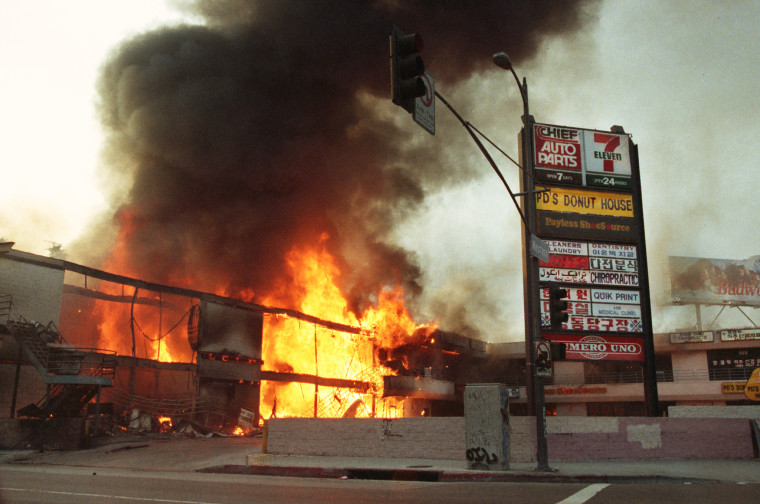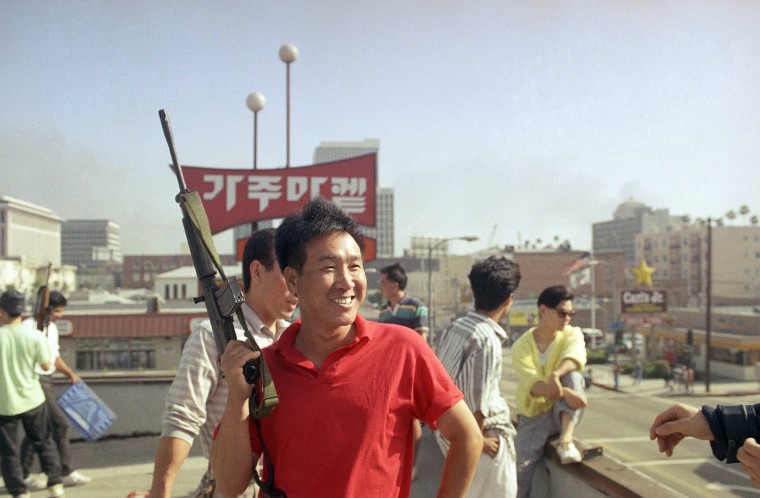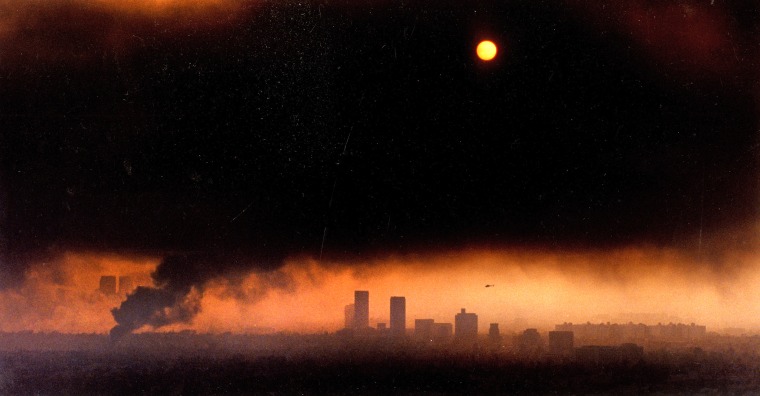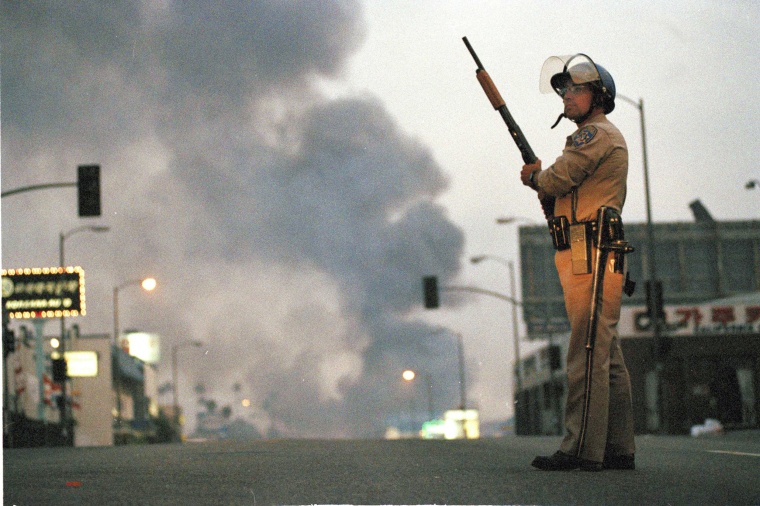Ahead of the 30th anniversary of the Los Angeles riots on April 29, Korean American and Black community leaders are planning a series of unity events to educate young people from both groups about a turning point in the city’s history and to reflect on the ongoing work of healing past wounds and building trust.
Korean Americans who lived through the uprising refer to the event as “Saigu,” which translates to “4-29.” April 29, 1992, was the first day of the riots, which began after a jury acquitted four white police officers in the beating of Black motorist Rodney King. Six days later, more than 50 people would be dead and 3,000 businesses destroyed or looted, nearly half of which were Korean-owned. Damages totaled about $1 billion.
Psychological scars ran just as deep: A survey from the Korean American Inter-Agency Council found that 15 percent of college-age Koreans in L.A. dropped out of school because of the riots, The Los Angeles Times reported in 1993.
“Saigu has become almost like a memorial for Korean Americans,” Connie Chung Joe, chief executive officer of Asian Americans Advancing Justice — Los Angeles, told NBC Asian America. “It’s a moment of profound sadness and loss, of feeling so targeted and so abandoned.”

Six Korean and Black organizations — including AAAJ, Los Angeles Urban League and Korean American Coalition — are hosting a peace gathering at Koreatown’s Liberty Park on Friday, bringing together recording artists and spiritual leaders to reflect on the impact of the riots on both racial groups. The musical performances from young Asian and Black artists, Joe said, are meant to draw in younger audiences who don’t learn much about the event in school.
In the late 1980s, widening racial wealth inequality escalated long-simmering tensions between Black and Korean Americans in L.A. Korean immigrants — who owned many businesses in impoverished, majority-Black neighborhoods — became the target of growing class resentment. These clashes reached a fever pitch in March 1991, when Korean shopkeeper Soon Ja Du killed 15-year-old Latasha Harlins and received probation.
A year later, the jury acquitted the officers involved in King’s beating, setting off widespread riots that targeted Koreatown. Desperate merchants called authorities for help, but the police never showed up. Many had been deployed to protect to affluent white neighborhoods like Beverly Hills.
To prioritize building Black-Asian solidarity, Joe said organizers were intentional with their use of language to center the perspectives of both groups. In marketing materials for the commemoration, they referred to the events of 1992 as an “uprising” instead of a “riot,” since “uprising” more accurately describes why violence had erupted following the King verdict, Joe said.
“The media back then framed this uprising as ‘Koreans vs. Blacks,’” Joe said, noting that she hopes to use the gathering to raise awareness about the systemic racism that still persists. “But the Korean community didn’t come up with that decision; the judge and our criminal justice system created this racial hierarchy.”

The Korean American religious nonprofit Faith and Community Empowerment, with the support of Mayor Eric Garcetti and other city officials, is leading a monthlong Saigu campaign that includes film screenings, art exhibits and symposiums on subjects like creating multicultural, anti-racist faith communities.
Hyepin Im, the founder of FACE, said many Korean business owners were sidelined or “revictimized” by the media and elected officials after suffering disproportionate losses during the riots. On the 10th anniversary, for example, she said President George W. Bush flew to L.A. but didn’t visit Koreatown or meet with any Korean American leaders.
“I told myself then that I would do my part to ensure our narrative would not be demonized or erased,” Im said. “Part of this campaign is to reclaim the word 'saigu' and turn it into something that is positive.”
A daylong event on April 29 at Tapestry L.A. Church will feature a segment honoring those who stood up for Korean Americans, such as Radio Korea, which became an ad hoc command center for besieged business owners; Koreatown Youth and Community Center, which provided business counseling and assistance to riot victims; and a Crips leader who returned stolen goods to store owners.

Separately, the Department of Cultural Affairs is commissioning six local artists to create a public art installation in Leimert Park Plaza called “Voices of the Rebellion: 30th Anniversary Reflections.” And the Black-led group Operation HOPE will lead a private bus tour through South Central L.A. to recognize three decades of healing and revitalization in the neighborhood.
City Councilmember John Lee, the second Korean American representative elected to the council, said it’s important to reflect on the legacy of Saigu because it precipitated the political awakening of the Korean diaspora.
He said his run for public office was heavily influenced by what happened to his mother, who in 1992 operated four shoe stores in Koreatown. None burned down during the riots, but the unrest turned the neighborhood into a ghost town and dealt a crushing blow to surviving businesses. Within a couple of years, she drained her savings and had to shut every shop.
“Watching it on TV, I remember being very angry at the lack of response,” he said. “I remember wondering, ‘Where was the police, and why weren’t they there to protect us?’”
While the losses are irretrievable and emotional wounds still sting, Lee said Asian and Black Angelenos have achieved a remarkable amount of healing and community-building in the intervening years.
“In last year’s anti-Asian hate rallies, you saw people from every race joining us,” Lee said. “I don’t know if that would have been the case 30 years ago.”
